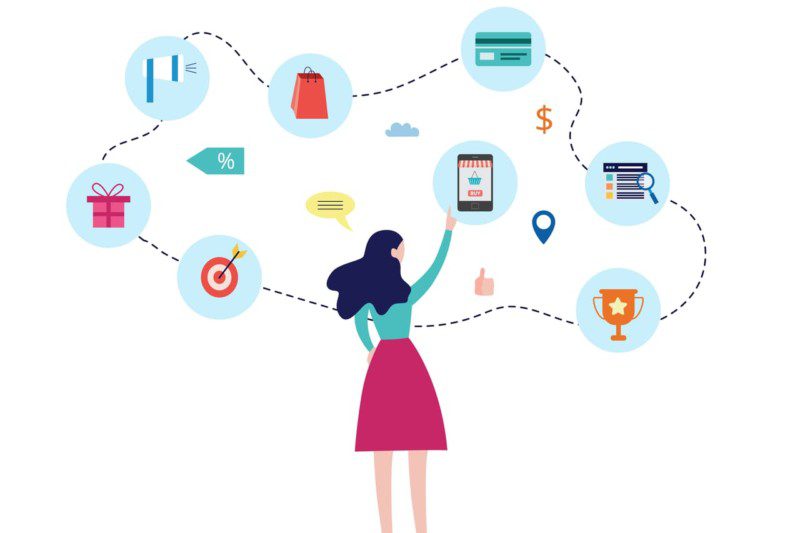Using first-party data has become a widespread way to market businesses online. This process uses the collected information of customers or a following on different platforms such as search engines or social media sites.
First-party data is information a customer or user provides willingly and isn’t purchased from illegitimate sources. This data includes emails and other activities on your website. This article shows how you can use this information for promotions and marketing strategies in the following ways.
1. Campaign Targeting Optimization
A well-created campaign that doesn’t speak to a specific audience falls flat. First-party data collection practices are legitimate measures that don’t customer or user privacy. Furthermore, the collected data allows marketers to identify real users or browsers, making it easier to build more specific campaigns.
Social media platforms have advertising setups that you can customize by using first-party data. The more information you can provide, the easier your target audience can find your ads. You can also craft a unique campaign on social media with B2B data. But you must identify the right social media platforms to make your campaign a success.
Other ways of effective marketing involve emails even today. Emails have a higher chance of getting clicks and conversion rates. If you’ve received a birthday email from your favorite online store and it knows you like scented candles, they might add a discount code you can use to shop. You can also replicate this strategy in your business with first-party data.
First-party data allows you to find the people who are potential customers. It helps you target customers who are more likely to interact with your campaigns.
Related: Here’s Why Every Start-Up Needs a Customer Data Platform
2. Customer Data Platform
The customer journey on your website is also first-party data that you should track. In this case, you can use a customer data platform (CDP) to make it possible. CDP is software you can integrate with your website to gather, store, and unify customer data. You can also keep up with customer activity with CDP on your websites.
You can gain valuable customer insights by tracking their journey and understanding what turns site visitors into paying customers. For instance, CDPs are similar to B2B data providers because they allow you to view where they began by using keyword research on a browser engine. It also has a feature to check if a user has browsed any social media accounts before purchasing from your online store.
There are various customer data platforms available in the market. The right one for you should help determine all valuable information, such as website activity, email address, purchase history, location, interests, and more.

3. Build Better Customer Relationships Through Real-Time Decisions
You can build trust with your customers when you gather first-party data legitimately. Your relationship with your customers tends to shift. However, external factors can affect their behavior and demographic. For one, some customers can move from one income bracket to another, but it won’t affect their lifestyles.
With first-party data, marketers can get the chance to map the customer journey by taking a look at data changes in their behaviors. A personalized customer journey can be meaningful by creating product recommendations through newsletters and other promotional deals. You can do this through email marketing. However, first-party data allows brands to create experiences across different platforms they use in their digital marketing campaigns.
4. Make Changes To Your Website To Improve Customer Experience
Your website is where all your business operations and transactions happen, so keeping it running smoothly is critical. It’s where your customers see the content they want before they decide to conduct business with your company.
The experience they get for the first few seconds determines if they stay browsing your website. That’s why it’s crucial to treat your website like your virtual place of business. If potential customers don’t get the service they deserve, they eventually move on to your competitors.
First-party data gives an insight into the customer’s experience. It gives you information on what changes your website requires and how to improve your online presence. For instance, take a look at your product pages. See which areas need updating.
Does it take longer before you can reach the product you’re looking for? If necessary, you must also improve the fulfillment process. When customers see how simple shopping is in your store, they’re more likely to purchase.
With first-party data, you can also create personalized ads that catch the customer’s attention. If the ads appeal to them, it’s because you’re addressing their wants and needs. It’s one of the most efficient ways to generate more revenue.
Using first-party data offers a fountain of information to marketers, from the kind of customers who visit your website to how you can develop your marketing strategies. With first-party data, you can market to the right people and learn information on how to keep them coming back.
Conclusion
First-party data is collected using various methods where customers themselves provide information in exchange for products or services you can provide as a business. Marketers and business owners use first-party data collection to get valuable data to know their customers, offer a seamless brand experience, build relationships, and keep customers interested. It’s the kind of give-and-take relationship between companies similar to establishing a partnership where all parties are satisfied.



